One of the world’s fast-paced cities, Shanghai is renowned for its captivating combination of rich history, modern innovation, and cultural diversity. Dubbed China’s economic powerhouse, the city has a curious arrangement of traditional buildings beside incredible skyscrapers, resulting in a magnificent display of the old intertwining with the new. This guide will take you on a tour across the marvelous culmination of historic landmarks, contemporary cityscape, bustling markets, and mouthwatering world-class cuisines the city offers. Whether you are an experienced traveler or new to exploring, Shanghai will always offer something unique to everyone.
What Are the Top Things to Do in Shanghai?
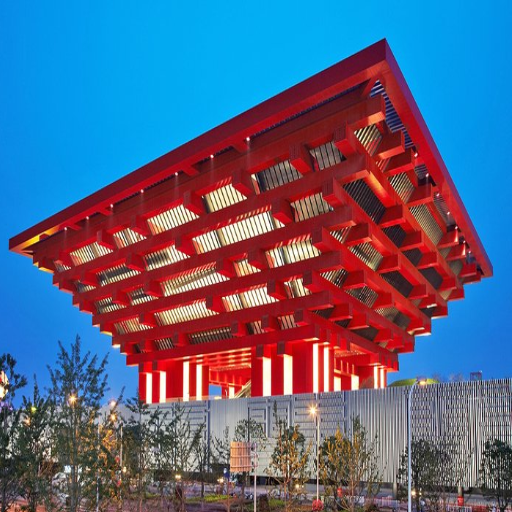
Must-See Attractions in Shanghai
The Bund (Waitan): It is a beautiful waterfront area with historic colonial buildings and modern architectural masterpieces of Pudong in the background. It is wonderful to walk along the Huangpu River and notice the contrast between Shanghai’s old and new sides.
Oriental Pearl Tower: One of the most recognized landmarks in Shanghai, the giant structure boasts multiple observation decks for unrivaled city views. Some of its key features include 468 meters in height, a revolving restaurant, a glass-bottomed observation deck, and it’s famous for its glass-bottomed observation floor.
Yu Garden (Yuyuan Garden): One of the classical Chinese Gardens from the Ming period, it is known for its beautiful pavilions, exquisite rockeries, and ponds for koi fishes. Due to its intricate architecture, it must be added to anyone’s travel list.
Shanghai Tower: With an astonishing height of 632 meters, it is the tallest structure in China and second in the world. Breathtaking views are available from the observation deck on the top of the 118th level. Standing at the top enables a person to look at the whole world from views never seen before, which are provided at the highest level.
Nanjing Road: This street welcomes many tourists because of its rich shopping culture. This street has a mix of old stores and new luxury brands, inviting tourists to explore Shanghai’s commercial activities.
Jade Buddha Temple: This Buddhist temple, resting in quiet solitude, is home to two stunning Buddha statues from Burma during the Qing Dynasty. Remarkably, jades remain an active site of reverence and worship.
Collectively, these attractions reflect the true beauty of Shangai, where deep-rooted history is complemented by modern architecture and tourism.
Unique Experiences in Shanghai’s Neighborhoods
The French Concession: Take a delightful walk along the blend of modern and colonial cafes and boutiques lined up in a colorful setting of trees and nature. This place captures the essence of Shanghai’s cosmopolitan culture and exquisite architecture.
Tianzifang: This floral artistic quarter in the former residential zone channels creativity through narrow passageways containing international restaurants, teahouses, craft shops, and art studios. This is a must-visit place for those who want to immerse themselves culturally and creatively.
Xintiandi: The strikingly modern dining and shopping district of Xintiandi is built around intricately designed Shikumen houses, turning the historical settlement into a vibrant contemporary cultural hotspot.
Yangpu Riverside: Enjoy a new leisure experience by jogging, strolling, or relaxing in the meticulously transformed Yangpu Riverside. It has green parks, walking trails, public art, and an exquisite View of the Huangpu River.
Hongkou District: With incredible landscape architecture, Lu Xun Mixed School and Park, enveloped by beautiful gardens and art sculptures, showcases the unmatched grandeur of Hongku District and its significance in Shanghai culture as a literary landmark.
Shaped by the many different cultures residing there, Shanghai is a city full of surprises, ensuring something is waiting to amaze everyone, whether they like art, food, or history.
Hidden Gems to Explore in Shanghai
M50 Creative Space: In the Art Hub District, the old textile mill that was once a textile hulk has now donned the cap of M50 (50 Moganshan Road). It is now a splendid community of galleries, creative spaces, and even studios to help support contemporary artists. The metropolis M City offers favors of advanced and new artists showcasing their artworks in M50. This dazzling community aims to change the perception of the Cutting Edge Art Scene of the City.
Longhua Temple and Pagoda: The Longhua Temple in Xuhui District is a notable Buddhist temple that has existed for over a millennium. It serves as a retreat for those seeking spirituality and indulging in the ancient world. The temple perfectly combines history and architecture, a hallmark of Chinese culture.
1933 Old Millfun: Hongkou District’s most famous architectural wonder is “The SlaughterHouse.” It once served as a slaughterhouse and has been completely renovated to include chic shops, homeowners cafes, and fashionable apartments, circling a giant circular corridor. It showcases an industrial style, a perfect example of modern photogenic architecture.
Shanghai Film Park: Located on the city’s outskirts, Shanghai Film Park dramatically portrays the history of Chinese cinema and gives guests a chance to walk through old Shanghai. Nearly every street and building has been replicated for use in TV shows and movies.
Each place is unique in art, history, creativity, and everything else, making Shanghai a city with endless treasures to uncover.
What Can You Discover Along the Bund?
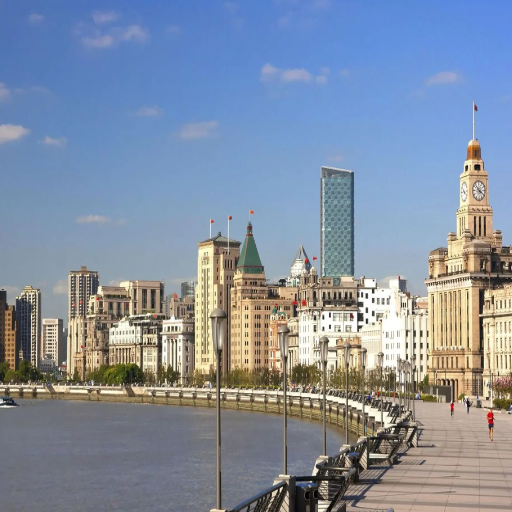
The History and Charm of the Bund
Located in the heart of Shanghai, the Bund is a historic waterfront area rich in cultural heritage and architecture. Due to the wide range of styles, such as Gothic, Baroque, and Art Deco, that were constructed during the colonial period, the Bund is regarded as the “museum of international architecture.” In the late 19th to early 20th century, the Bund was a major center for trade and finance, making substantial contributions to the city’s economic development.
Fulfilling its charm, the renowned riverside promenade with The Bund features such skeletal landmarks as the Customs House and HSBC Building. Along with observing the architectural wonders, tourists and locals alike can learn about the engineering marvels of the massive floodwalls built to control the water levels and protect against flooding. Stunning engineering structures are only a part of the contrasts, for the elevated points of Peninsula Hotel and modern skyscrapers offer a view that combines moremodern and historic Shanghai, with the Bund unchanging as a classic centerpiece.
Iconic Skyscrapers and Views
Shanghai can be described as one of the leading cities in modern-day engineering. The construction and skyline of the city stand out due to its skyscrapers. Chinese National Flag Tower dominating the backdrop of Shangai facilitates the Chinese tower’s height, which stands as the tallest building in China, measuring over 2,073 feet with 128 floors. The building’s twisting shape is both beautiful and unique as it reduces wind load by as much as 24 percent. Shanghai also plays host to The World Financial Center, whose top side has a unique trapezoidal opening that serves as an architectural wonder and provides help in reducing wind pressure of up to 492 meters. Serving a height less than Lady Jin, The Jin Tower flagship hotel is over 1380 feet, towering over the rest, and is visible as far as its design showcases traditional Chinese culture.
On the top floors, visitors can take in the full grandeur of the city. With the opening of its elevator located at the observation deck, tourists are in for a treat, and it is the fastest elevator in the world. Gets them to the observation deck with the lowest time needed. Not only does Shanghai stand as a wonderful place to experience the way modern engineering works fully and stands out as a city with extraordinary urban creativity serving as an international landmark, but it is also recognized for incredible innovation in form and function and depicts the embodiment of nature with the aid of technology through the use of wind-resistant designs and energy-efficient systems.
Stroll Along the Promenade
The promenade next to Shanghai Tower blends modern skyscrapers with green recreational areas, providing an oasis from hectic urban life. As a pedestrian-oriented walkway, it is enhanced by gardens, fountains, and benches that foster visitor relaxation and socialization. This addition illustrates the balance between the urban setting and people’s health and encourages the creation of more open spaces in heavily populated cities.
On the other hand, the promenade also has some eco-friendly features, such as its water-permeable pavements, which help reduce flooding in the city. Moreover, the surroundings are lit by energy-saving LEDs at night, increasing the users’ safety and comfort while consuming less energy. Aesthetically, these design features go hand in hand with sustainable urban development, as they lessen the adverse effects on nature while providing a functional and beautiful place.
The promenade benefits from the wind-resistant architectural planning of the Shanghai Tower, as it reduces wind turbulence at ground level. This ensures the visitors using the path can comfortably experience their exploration. Its proximity to the tower allows local tournaments to blend aesthetic admiration and practical utility, inviting them to immerse in an innovative vision of modern urban design. Such technical precision and thoughtful community considerations promote the promenade as a vital part of Shaghai’s progressive urban landscape.
Why Visit the Shanghai Museum?
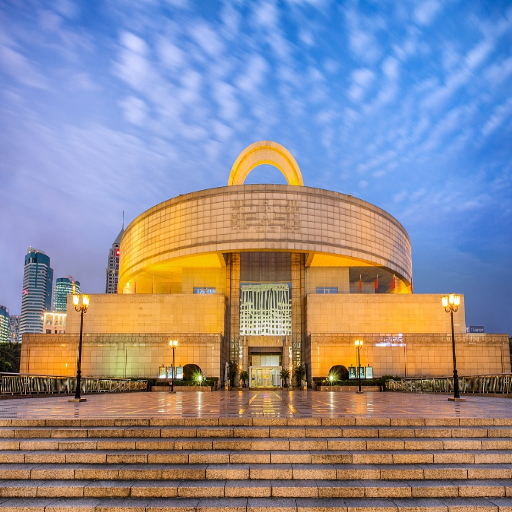
Highlights of the Shanghai Museum’s Collection
The Shanghai Museum has different items that represent Chinese culture and art. Some of the key ones are:
Ancient Bronze Artifacts: This collection includes over 400 bronze artworks, including vessels and weapons of outstanding artistic beauty and craftsmanship, from the Shang and Zhou dynasties (16th century BCE to 256 BCE).
Ceramic Collections: This collection includes more than 500 pieces from the Neolithic period to the Qing dynasty and illustrates advancements in pottery and porcelain techniques, which are indispensable to the arts of China.
Calligraphy and Paintings: The collection comprises well-known ancient Chinese traditional calligraphy and drawings. It sheds light onto several ancient techniques, styles of working with a brush, and representations from various dynasties.
Jade Artifacts: This collection showcases stunning pieces made of jade during the Neolithic and Qing dynasties and embodies the rich spiritual and ceremonial heritage the Chinese associate with jade.
Ancient Coins: This collection contains more than 7,000 coins from the Warring States period and different Silk Road trade routes, proof of China’s economic and cultural development.
With so many carefully brought-together exhibits, the Shanghai Museum stands out as the most in-depth representation of Chinese history, culture, and arts, making it a must-see for tourists.
The Cultural Significance of the Museum
The Shanghai Museum is of great cultural importance as it links China’s historical past and modern-day society. China has a history of thousands of years, and the museum attempts to provide a glimpse of the evolution of China’s civilization. Its massive collection of exhibits, which includes antique jade, handcrafted porcelain, and ancient coins, showcases unique pieces from the past that embodied the values, traditions, and craftsmanship of their time. Such ties to the past enhance the appreciation of one’s culture and heritage, something essential to foster in modern society.
In terms of education, the museum offers a simple history, with collections of ancient artifacts from different trade routes and the use of symbolism and artistic creativity. To students or historians, the museum is a treasure cove for discovering the many parts of the world and its people. Understanding the technical and cultural aspects of the exhibits widens one’s eagle eye to the world beyond. Coins, for instance, are a means of monetary exchange and a testament to the goods and services exchanged during the Silk Road, linking China to the globe.
In addition, the Shanghai Museum represents a center of pride and cultural identity for China’s people. It is a hallmark of the country’s willingness to protect its heritage while encouraging other cultures to interact. Through international collaborations with different institutions and the hosting of global exhibitions, the museum invites people from all over the world to come and appreciate Chinese art and history regardless of the territorial limits it has. This role as a protector of history and an integrator of exchange makes the museum important in the world.
Planning Your Visit to the Museum
While preparing for your visit, consider these tips for improving the experience:
Hours of Operation: The museum typically opens from 9:00 AM to 5:00 PM, with the last entrance allowed at 4:30 PM. For changes, especially during holidays or significant occasions, please view the museum’s webpage or call the information desk.
Ticket Sales: Tickets can be bought online or at the venue. Pricing for tickets and admission differs depending on the type of visitor (adult, child, student or senior), and is often discounted for groups or during off-peak times. Some exhibitions or events may have additional tickets.
Accessibility: The museum has accessible ramps, elevators, and disabled visitor’s restrooms. Often, wheelchair aids are provided, and guided tours are provided for differently abled visitors upon request.
Tours and Events: These include audio-guided tours responsive to visitors’ requests; visitors who join the guides can rent the audio guides and enhance their understanding of the exhibition. Guide highlights and language facilities are usually provided on the website or at the reception desk.
Conduct in the Museum: Rules apart from those specified in the guide have to do with conduct and behavior in the museum; the visitor is supposed to act with understanding and courtesy to preserve a pleasant atmosphere. Photography differs depending on the exhibit; some allow non-flash photography, while others restrict it.
As stated earlier, the extensive details will help you plan your visit and enjoy everything the museum offers. Further restrictions associated with COVID-19 and up-to-date changes on current exhibitions may be found on the official website.
How to Enjoy the Former French Concession?
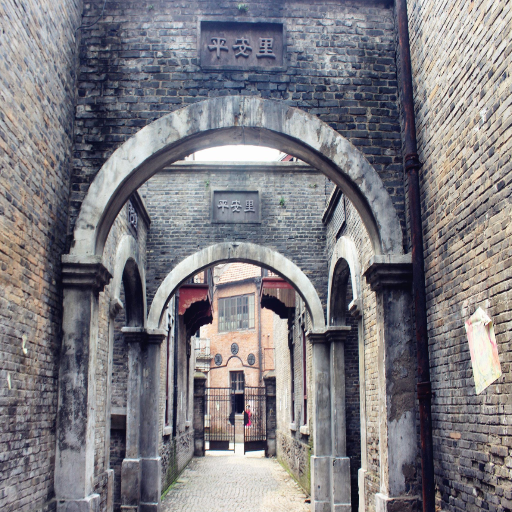
The Allure of Old Shanghai in the French Concession
The Former French Concession is a mesmerizing remnant of Old Shanghai, where Europe meets China, centered around the former French Concession. While visiting, make sure to take note of the following areas:
Walking Tours: Wukang Road, Sinan Road, and other tree-lined streets are filled with historic villas and colonial buildings. This region is wonderfully atmospheric and allows for strolls to marvel at the vibrant history intermingled with the present.
Cafés and Boutiques: Ferguson Lane and Tianzifang, featuring cafés and boutique shops, capture the essence of Shanghai’s juxtaposition of ancient glory with modernization.
Historical Sites: Other important locations for history lovers include the Shanghai Arts and Crafts Museum and the former residences of iconic figures like Sun Yat-sen.
Transportation Accessibility: The area’s connection to the public transport system is excellent. It is near the metro stations, especially South Shaanxi Road Station on Line 1 and Xintiandi Station on Line 10.
Walking around the Former French Concession gives a unique glimpse into Shanghai while remaining economical. It offers an approachable blend of cultures.
Exploring the Shikumen Architecture
With every exploration of Shikumen architecture, I have never failed to appreciate its combination of Eastern and Western elements. In this case, the key features include the black wooden gates with stone arches surrounding them. This is a classical portrayal of Chinese and European architecture combined in one structure. Shikumen often has narrow passageways called longings, which allow the community to be social and foster a community spirit.
From a practical standpoint, these structures were constructed to be as helpful as possible, considering the limited urban space. They considered airflow and natural sunlight. They utilized grey bricks and wooden beams, adding to their beauty. These changes reflect the socio-historical situation when Shanghai’s population dramatically increased during the early 20th century.
These scenarios make it possible to appreciate Shikumen architecture further while reminding us of the gem of culture it was in the former French Concession.
Sampling Street Food and Local Cuisine
Trying out the street foods and local cuisines in the Former French Concession was an enjoyable experience that enabled me to appreciate the area’s culture and history. The food circus showcases the local way of life, as demonstrated by its scallion pancakes, xiaolongbao, and dumplings, which boast innovation and resourcefulness.
Walk through any town, and you’ll see the practical requirements of pedestrian flow, kitchen ventilation, and stall space, which are all part of the configuration of street food kiosks. These features show the same design features typical of Shikumen-style housing, in which an attempt is made to maximize the functionality of limited space. The greater use of fresh ingredients also shows a concern for sustainability and community development, thus integrating the different aspects of the region’s culture.
What Makes Zhujiajiao a Must-Visit Water Town?
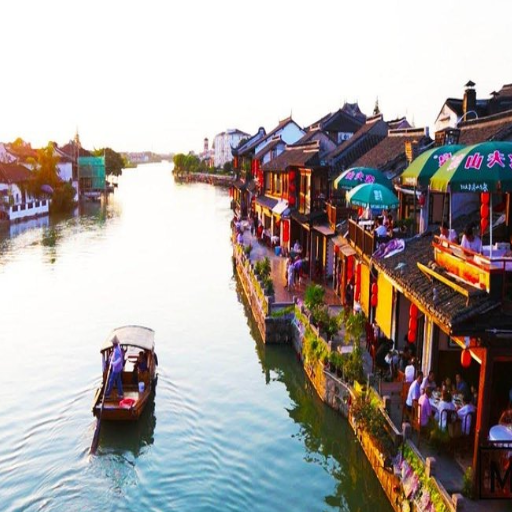
Discovering the “Venice of Shanghai”
Zhujajiqaio is not to be passed by in Shanghai, ‘the Venetian city,’ due to its ancient style and relics, overflowing canals, and townspeople. Crossing the stone bridges and walking through the narrow lanes makes me feel like I am living in the past. Zhujiajiao’s town’s ancient structures, such as the Fangsheng Bridge and Kezhi Garden, are today’s remnants of nature’s tranquility and mankind’s artistry. These structures provide needed relief and peace from today’s chaotic world.
Zhujiajiao’s stunning charm is bound at the bridge and Zhujiajiao waterways, which follow certain features that enhance their aesthetic value while remaining effective as long-lasting waterways and bridges. Moreover, the town’s narrow streets are designed to maximize foot movement while minimizing space. Additionally, the natural stone and timber used in building structures depict sustainability because these materials are long-lasting and eco-friendly. These design ideas enable Zhujiajiao to preserve its fantastic culture while modernizing the town to attract tourists.
The Ming Dynasty Heritage in Zhujiajiao
Branching outwards from the Zhujiajiao region, the Ming Dynasty marked a critical developmental phase, highlighted by impressive architectural landmarks. During this time, the town emerged as a central point of trading and interaction, necessitating building bridges, waterways, and other crucial infrastructure. Apart from the aesthetic elements, the intricate designs of stone arch bridges and the strategic positioning of waterways prove their effectiveness in fulfilling fundamental guidelines like beauty and water transportation.
The Fangsheng Bridge is an example of outstanding multi-arch construction that emerged during the Ming dynasty. Its design remains one of the best examples of walking bridges with arches, where the weight is equally divided to reduce stress on stones, keeping them for a long time. The water channels excavated during the Ming period are effectively along the natural flow of water to keep water from sitting uselessly, allowing water to be freely used.
Stone and wood were chosen as the choice materials due to their likely presence and strength in the surrounding area. These choices indicate the practical engineering concepts in ancient infrastructure, maximizing the harmony between the intended use and the local beauty. Those features explain the primary reason behind the continuing magnificence of adding to and increasing the structural splendor of Zhujiajiao’s Ming landmark.
Best Ways to Sightsee in Zhujiajiao
In my view, the most effective way to get a feel for Zhujiajiao is to ride a boat over the ancient canals. This offers close insight into the town’s extensive waterway system and architectural marvels, such as the Fangsheng Bridge. To appreciate the city, some time must be spent in the narrow streets, where traditional houses and local works of art can be observed. The old post office and Yuanjin Buddhist Temple are also essential landmarks because they represent Zhujiajiao’s rich history and culture.
From an engineering perspective, it’s worth noting that in the case of Zhujiajiao, the wooden boats used for tourism have been optimally designed for balance and stability, making them safe to use while also offering scenic views. Besides, these boats are very eco-friendly, which is also a benefit of the area’s conservation policies. Moreover, the car-free parts of the town respect the city’s basic form, enabling eco-friendly tourism while relieving the pressure on the town’s infrastructure. With all these thoughtful approaches, harmonious sightseeing that respects the rich heritage of Zhujiajiao is guaranteed.
Frequently Asked Questions (FAQs)
1. What are some of the things to do in Shanghai?
There is something for everyone from the Yu Garden to the Bund, Old Shanghai to the Zhujiajiao Water Town, and the colonial France Concession. The Yu Garden stands out with its ancient Chinese-style gardening, while the Bund is perfect for modern-day towers. Don’t forget to shop at Nanjing Road, which has high-end shopping. The Zhujiajiao Water Town is a must-visit; its peaceful canals and stunning architecture are indeed a marvel.
2. What is the best way to tour Zhujiajiao Water Town?
Riding on the water in traditional wooden boats is a great way to start. Attempt the narrow paths where you can find the Yuanjin Buddhist Temple and a post office. Everything about the small town is friendly and easy to walk around, ensuring that each visitor can appreciate the original town plan and maintain a sustainable tourism environment.
3. Are boat rides in Zhujiajiao eco-friendly and safe?
Of course, boat services are becoming popular in some parts of Zhujiajiao village, and it’s no wonder why! The boats are perfect for construction and style, guaranteeing safety and minimal environmental disturbance. As they don’t pollute the waters, they are eco-friendly.
4. Why is Zhujiajiao culturally significant?
In Zhujiajiao, you can find critical historical sites such as Fangsheng Bridge, Yuanjin Buddhist Temple, and the old post office. These places showcase the town’s rich history. Studying these places helps in understanding the region’s history and culture.
5. Can one visit modern and ancient sites of interest in Shanghai?
Yes. Shanghai is known for its blend of modern and historical sites. The city has various contemporary skyscrapers, including the Oriental Pearl Tower and Shanghai Tower, alongside traditional attractions such as Yu Garden and Water Towns like Zhujiajiao. This offers something for travelers looking for simultaneously modern and historical sights.